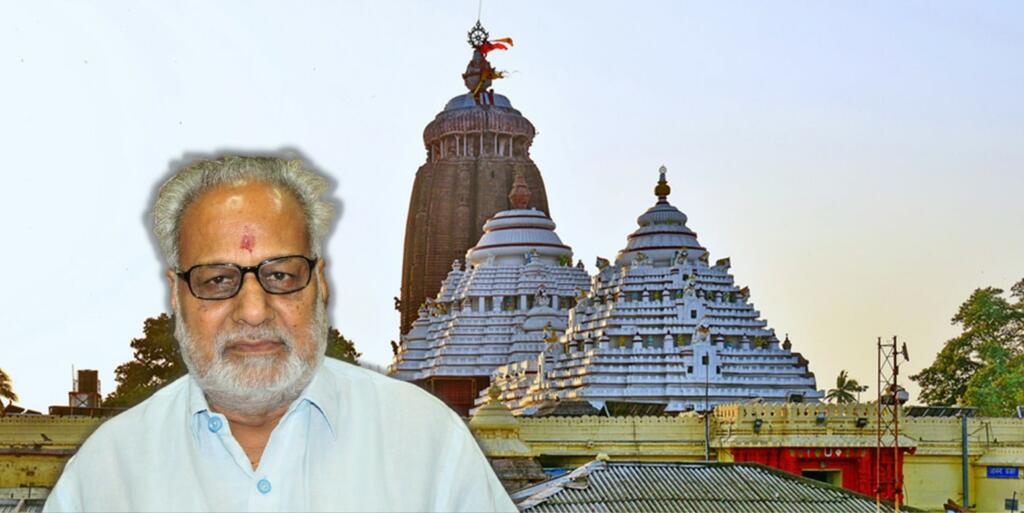Ganeshi Lal statement about Puri Temple: Jagannath Puri is a Hindu temple located in the city of Puri in the state of Odisha, India. The temple is dedicated to Lord Jagannath, a form of Lord Vishnu. It is considered to be one of the four sacred Dhams (abodes) of Hinduism. One of the unique features of the temple is that it is only open to Hindus and non-Hindus are not allowed inside.
The reason for this is rooted in the belief that the temple is a sacred space that is meant to be used for the worship of Lord Jagannath and other deities. According to Hinduism, the temple is not just a physical structure, but also a spiritual space where devotees can connect with the divine and seek blessings. It is believed that the temple and its deities are not just symbolic representations but actual manifestations of the divine.
Hindus believe that only those who have faith in Lord Jagannath and the Hindu religion should be allowed inside the temple. The temple is considered a sacred place where the divine and human worlds intersect and the entry of non-Hindus is seen as a desecration of this sacred space.
Well educated person should know the rituals before commenting
Governor Ganeshi Lal recently made a statement regarding the Jagannath Puri temple, which has met with backlash from many individuals and groups. The statement in question is that the Jagannath Puri temple should be opened for all castes and religions. He said that the current restrictions on entry should be lifted.
However, statement of Ganeshi Lal about Jagannath Puri temple is problematic for several reasons. Firstly, the Jagannath Puri temple has a long history and tradition of being a sacred site for the Hindu community. It has specific rituals and customs that are deeply ingrained in the culture and beliefs of people. Opening the temple to people of all castes and religions could potentially disrupt these traditional practices and can cause offence to members of the Hindu community.
Also Read: Sanctity of Shri Jagannath Puri Mandir should not become a victim of political tussle
Additionally, many argue that the restriction on entry to the temple is not a form of discrimination. Rather, it is a way to preserve the sacredness and sanctity of the temple. By lifting these restrictions, the temple could become overcrowded and lose its spiritual significance. Furthermore, the temple is also a historical site and its architectural heritage is of great importance.
Another reason why non-Hindus are not allowed inside the temple is to maintain the purity and sanctity of the temple. The temple is considered a sacred place where devotees can purify their minds and souls through worship and devotion. Many Hindu rituals and ceremonies are performed inside the temple and non-Hindus may not understand or respect the significance of these rituals. Allowing non-Hindus into the temple may also lead to misunderstandings or conflicts between different religious groups. This may introduce distractions that could disrupt this spiritual process.
Many temples have their own rituals
It’s worth mentioning that there are many other temples in India and around the world that have some other type of restrictions. However, it’s important to keep in mind that these restrictions are based on religious beliefs and traditions. They should be respected and understood in that context.
Some temples are there where Men are not allowed like Devi Kanyakumari. This temple, located in the south of India, strictly forbids any male presence inside its premises. Entry is only granted to sanyasis (celibate men) up until the gate, while married men are denied entry.
Lord Brahma Temple, Rajasthan, the renowned Brahma Temple is a highly revered site, as it is one of the few places in the world where Lord Brahma is the presiding deity. The temple is renowned for its strict rule of forbidding married men entry into the inner sanctum, where they are not permitted to offer prayers to the deity.
Kamakhya Temple, Assam. The famous Indian temple is a popular destination for visitors, with its prohibition on men entering the premises at certain times during the year.
Sabarimala Temple is widely revered by devotees across India, who view it with respect and reverence. This temple is especially significant to many Hindus, as it pays homage to Lord Shasta, a celibate deity. Historically, women and girls of reproductive age were not allowed to take part in the veneration of this deity, leading to Sabarimala being highlighted by left cabal as a representation of India’s patriarchal society.
In conclusion, we firmly believe that Governor Ganeshi Lal and any other individual or institution should be mindful of the customs and practices associated with Hindu Temples before making any comments. Guru Nanak Dev and Saint Kabir were allowed to enter the Jagannath Puri Temple despite not being Hindu by faith, as they both held respect and reverence for Hinduism. This illustrates that restriction on entry of non-Hindus is not based on a person’s religion. Rather, it is based on their level of faith and belief in Lord Jagannath.
Support TFI:
Support us to strengthen the ‘Right’ ideology of cultural nationalism by purchasing the best quality garments from TFI-STORE.COM
